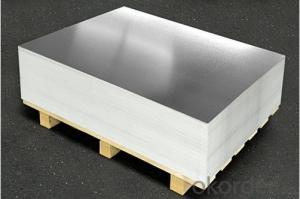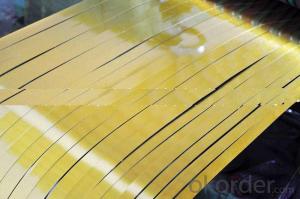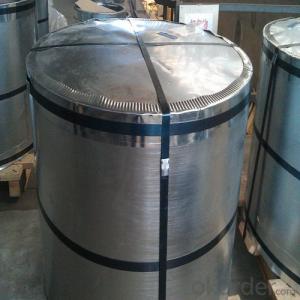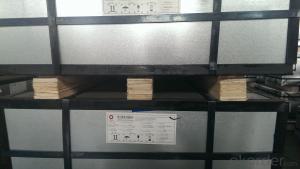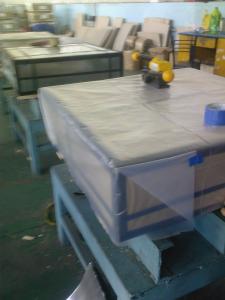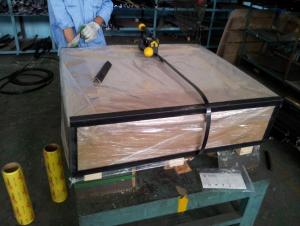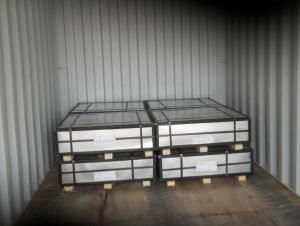Prime Quality Electrolytic Tinplate and TFS for Metal Containers
- Loading Port:
- Shanghai
- Payment Terms:
- TT OR LC
- Min Order Qty:
- 50 m.t.
- Supply Capability:
- 25000 m.t./month
OKorder Service Pledge
OKorder Financial Service
You Might Also Like
Specification
1.Structure of Prime Quality Electrolytic Tinplate and TFS for Metal Containers Description
Also known as chromed steel, tin-free steel (TFS) is obtained by coating the metal base (low-carbon steel) with an ultra-thin layer of metallic chrome and then with a chromium oxide layer.
The product complies with ASTM A-657 Specification and is manufactured with low current density (TFS-III) and is supplied in coils (up to 12 metric tons)or sheets.
2.Main Features of the Prime Quality Electrolytic Tinplate and TFS for Metal Containers
Corrosion resistance – Tinplate has got good corrosion resistance. By selecting a proper coating weight, appropriate corrosion resistance is obtained against container contents. Coated items should meet 24 hour 5 % salt spray requirement.
Solderability and weldability – Tinplates can be joined both by soldering or welding. These properties of tinplate are used for making various types of cans.
Hygienic – Tin coating provides good and non toxic barrier properties to protect food products from impurities, bacteria, moisture, light and odours.
Safe – Tinplate being low weight and high strength makes food cans easy to ship and transport.
Eco friendly – Tinplate offers 100 % recyclability.
Tin is not good for low temperature applications since it changes structure and loses adhesion when exposed to temperatures below – 40 deg C.
3.Prime Quality Electrolytic Tinplate and TFS for Metal Containers Images


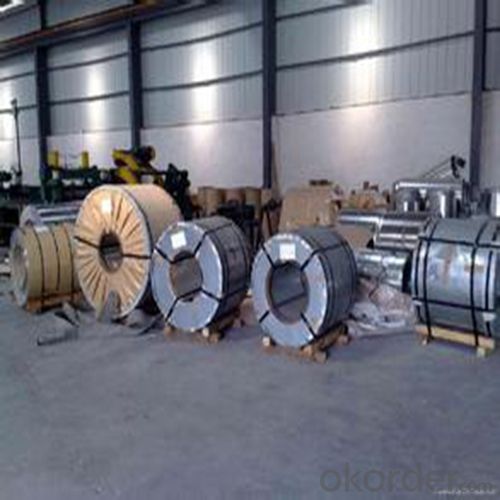
4.Prime Quality Electrolytic Tinplate and TFS for Metal Containers Specification
Specification of :
Standard: ISO 11949 -1995, GB/T2520-2000,JIS G3303,ASTM A623, BS EN 10202
Material: MR,SPCC
Thickness:0.15mm - 0.50mm
Width: 600mm -1150mm
Temper: T1-T5
Annealing: BA & CA
Coil Inner Diameter: 508mm
Weight: 6-10 tons/coil 1~1.7 tons/sheets bundle
Passivation:311
Oil: DOS
Surface: Finish,bright,stone,matte,silver
5.FAQ of Prime Quality Electrolytic Tinplate and TFS for Metal Containers
- How are the tinplates specified?
The tinplates are specified as per the steel base, extent of tempering, the coating weight, annealing method and the surface finish.
- How many types there are for base steels?
The base steels are of three types: Type MR, L, D
- Q: What are the different types of tin coatings used on tinplate?
- There are primarily three types of tin coatings used on tinplate: electrolytic tinplate (ETP), tin-free steel (TFS), and black plate. ETP is the most common and consists of a thin layer of pure tin electroplated onto the steel substrate, providing excellent corrosion resistance and food compatibility. TFS, on the other hand, is a steel substrate coated with a layer of chromium oxide or chromium oxide and polymer, offering comparable properties to ETP but without the use of tin. Lastly, black plate refers to uncoated steel that can be further processed or coated as per specific requirements.
- Q: How does tinplate packaging handle exposure to moisture?
- Tinplate packaging has excellent resistance to moisture, making it highly suitable for protecting products from humidity and preventing damage caused by exposure to moisture.
- Q: What are the considerations for handling and storing tinplate coils?
- There are several important considerations when handling and storing tinplate coils. Firstly, it is crucial to ensure proper handling techniques to avoid any damage or deformation to the coils. This may involve using appropriate lifting equipment and avoiding excessive bending or dropping. Secondly, tinplate coils should be stored in a clean, dry, and well-ventilated area to prevent corrosion. It is also important to protect the coils from direct sunlight and extreme temperatures. Additionally, proper stacking and securing methods should be employed to prevent any accidents or shifting during storage. Regular inspections and maintenance of the storage area and the coils themselves are also essential to ensure their integrity and quality.
- Q: What are the advantages of using tinplate for electrical enclosures?
- There are several advantages of using tinplate for electrical enclosures. Firstly, tinplate is highly resistant to corrosion, making it ideal for protecting electrical components from moisture and other environmental factors. Additionally, tinplate is a strong and durable material, providing excellent protection against physical damage and impacts. Furthermore, tinplate is easily formable and can be shaped into various enclosure designs, allowing for flexibility in design and customization. Lastly, tinplate is a cost-effective option compared to other materials, making it a practical choice for electrical enclosures.
- Q: What are the main applications of tinplate in the music industry?
- Tinplate is primarily used in the music industry for producing high-quality metal packaging for CDs, DVDs, and vinyl records. Its excellent durability and resistance to corrosion make it an ideal material for protecting and preserving music media. Additionally, tinplate is also used in the manufacturing of musical instrument components, such as guitar picks and drum shells, due to its malleability and acoustic properties.
- Q: What are the main regulations governing tinplate recycling?
- The main regulations governing tinplate recycling vary by country and region. However, some common regulations include proper sorting and separation of tinplate from other materials, ensuring safe handling and storage of tinplate waste, and compliance with environmental standards for recycling processes. Additionally, many jurisdictions require proper labeling and documentation for tinplate recycling facilities and may have specific requirements for the disposal of hazardous waste generated during the recycling process.
- Q: What is the cost of tinplate?
- The cost of tinplate varies depending on factors such as the current market conditions, quality of the tinplate, and the quantity being purchased. It is recommended to check with suppliers or conduct market research for the most accurate and up-to-date pricing information.
- Q: What are the main factors affecting tinplate coil surface quality?
- The main factors affecting tinplate coil surface quality include the quality of the raw materials used, the manufacturing process, the level of cleanliness and maintenance in the production environment, the handling and storage conditions, and the presence of any external contaminants or defects.
- Q: What are the common surface coatings for tinplate?
- The common surface coatings for tinplate include tin-free steel, electrolytic tinplate, tin-free steel with organic coatings, and tinplate with lacquered coatings.
- Q: Can tinplate be used for automotive applications?
- Yes, tinplate can be used for automotive applications. Tinplate is a type of steel coated with a thin layer of tin, which provides it with excellent corrosion resistance. This makes it suitable for various automotive components, such as fuel tanks, panels, and trim. Additionally, tinplate is easily formable, weldable, and has good strength, making it a favorable material for automobile manufacturing.
Send your message to us
Prime Quality Electrolytic Tinplate and TFS for Metal Containers
- Loading Port:
- Shanghai
- Payment Terms:
- TT OR LC
- Min Order Qty:
- 50 m.t.
- Supply Capability:
- 25000 m.t./month
OKorder Service Pledge
OKorder Financial Service
Similar products
Hot products
Hot Searches
Related keywords










